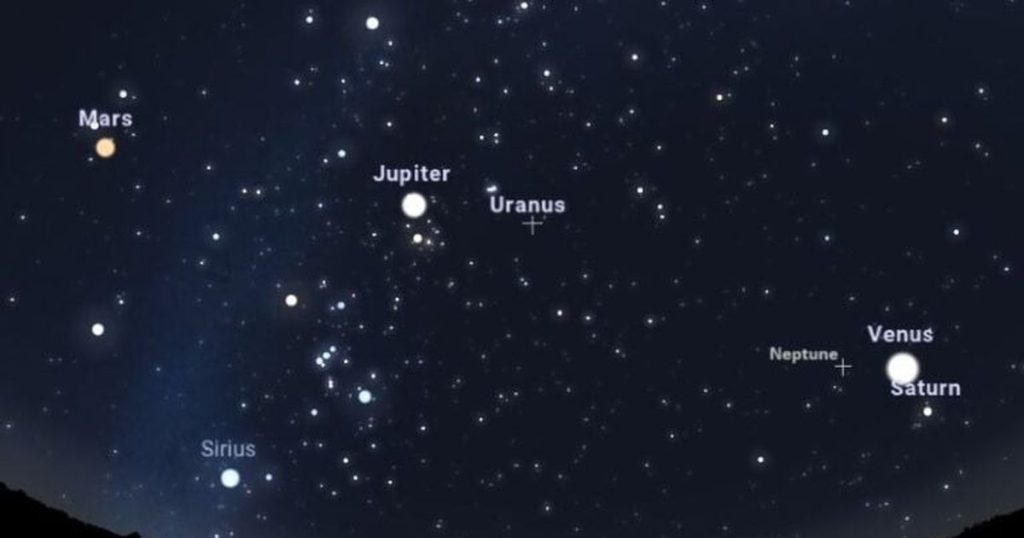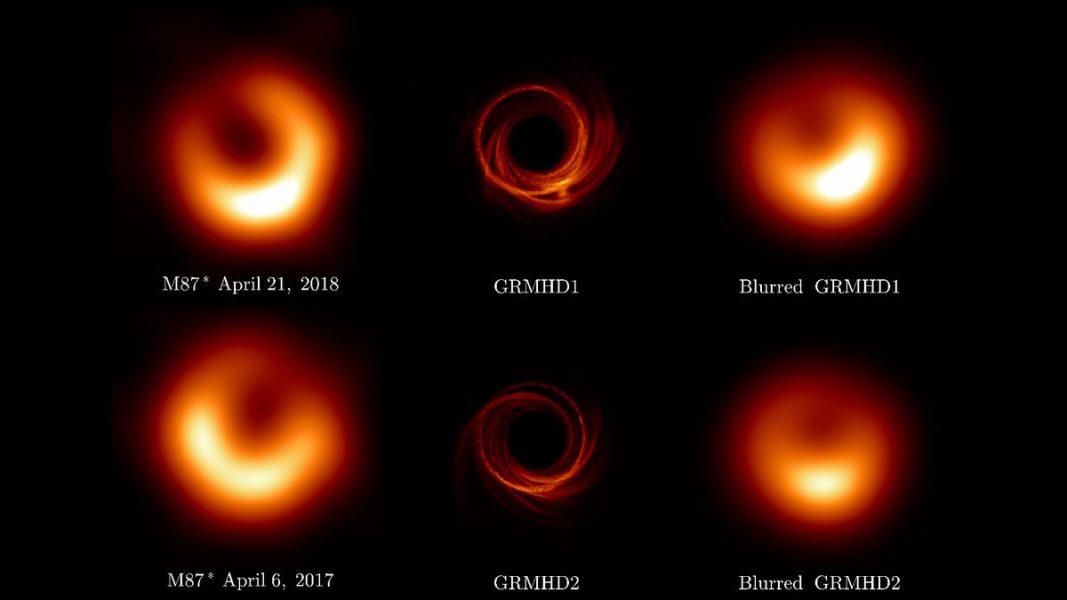Star gazers get rare conditions to see several planets at once Saturday: ‘Very, very special’ – The Spokesman Review

Color SchemeSubscriber ActionsStaff OptionsConnect With UsSupport Local JournalismWhile planets circle the sun in what’s called a heliocentric orbit, they rarely fall together in what appears to the human eye as somewhat of a line across the visible horizon.Saturday is one of those times.Recognizing that the bright things we see as planets generally don’t twinkle as stars do, six of the solar system’s eight planets can be seen on Saturday evening. However, only four (excluding Earth) can be seen by the naked eye.Mars, Jupiter, Venus and Saturn should be easily visible. Viewers will need something like high-powered binoculars to see Neptune and Uranus, but local weather should cooperate. Mercury will not be visible in the night sky until next month.Valerie Thaler, a meteorologist at the National Weather Service at Spokane International Airport, said this current pattern of cold, dry air should give stargazers a rare open view.She noted that Spokane-area conditions at this time of winter generally include fog, clouds and other things that hide the wonders of the sky.“But we are under a dryer, colder air mass right now,” Thaler said. “We are expecting the skies to be generally clear. There could be some light clouds north of Spokane. But it’s pretty good to see what you want to see.”Writing for EarthSky.org, Kelly Kizer Whitt and Deborah Byrd noted that the best time to see Mars, Jupiter, Venus and Saturn, and the other two stars with magnification, will be just after sunset on Saturday evening.“Start in the west, where the sun has just set. As the sky darkens, you’ll spot Venus easily, because it shines more brightly than any star. In late January, you’ll find Saturn between Venus and the horizon,” Whitt and Byrd wrote. “Saturn is sinking toward the sunset, which will make it harder to spot in February.”“The other two planets that you can see with your eyes alone are Jupiter, which will be bright and higher in the sky than Venus or Saturn when night falls, and Mars, which is reddish and will be rising in the east soon after dark. Mars is nice and bright right now, at its best viewing in two years! And that’s really what makes the January sky full of planets so very, very special.”They noted that the planets, when visible, can loosely be defined as being in a line. But they won’t be in a straight line, more of a loosely associated string of illuminated objects in the night sky that are in the same general area.Uranus is the seventh major planet outward from the sun. It most likely will not be visible Saturday evening by the naked eye. But Whitt and Byrd wrote how stargazers can find it with magnification.“In the general vicinity of Jupiter, you’ll see a fuzzy, dipper-shaped cluster of stars … it’s called the Pleiades, or Seven Sisters. Uranus is not too far away from the Pleiades,” they wrote.Neptune is the eighth planet outward from the sun, and it’s even dimmer than Uranus.“But it’s near some other bright objects now: dazzling Venus and bright, golden Saturn,” Witt and Byrd wrote. “In fact on January 29 and 30 Neptune will be just a few moon-widths to the side of Venus.”Mercury, which can be seen in the morning sky, will move into the evening sky in February.But a full alignment of all eight planets – including Earth – apparently is not in the cards.“The team at EarthSky has been presenting night sky information for nearly 50 years. And we’ve seen the term great planetary alignment tossed around now and again,” they wrote. “When will it happen? The answer, apparently, is never.”They noted that in Jean Meeus’ book, “Mathematical Astronomy Morsels,” he noted that the eight planets will line up within 3.6 degrees of sky every 396 billion years. The sun is not expected to survive long enough for that to happen.“But, sometimes, we can appreciate the beauty and wonder of seeing several bright planets arrayed across our sky,” Witt and Byrd wrote. “And January 2025 is one of those times!”Local journalism is essential.Give directly to The Spokesman-Review’s Northwest Passages community forums series — which helps to offset the costs of several reporter and editor positions at the newspaper — by using the easy options below. Gifts processed in this system are not tax deductible, but are predominately used to help meet the local financial requirements needed to receive national matching-grant funds.Get breaking news delivered to your inbox as it happens.Earlier this year, “Giving USA: The Annual Report on Philanthropy” confirmed what many nonprofits suspected to be true: charitable giving continued its decline in 2023.Follow UsSupport Local JournalismSubscribeHelpUser
Advertising
MoreContact Us© Copyright 2025, The Spokesman-Review | Community Guidelines | Terms of Service | Privacy Policy | Copyright Policy
Source: https://www.spokesman.com/stories/2025/jan/24/star-gazers-get-rare-conditions-to-see-several-pla/






